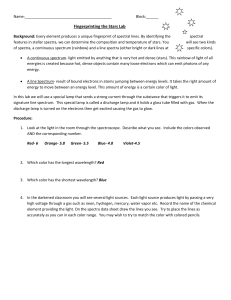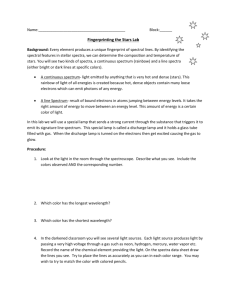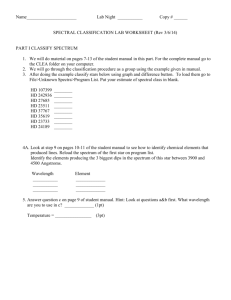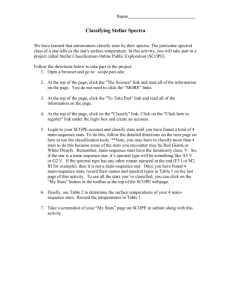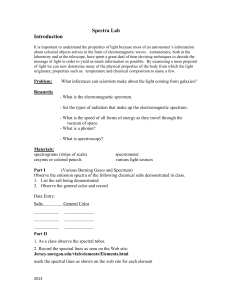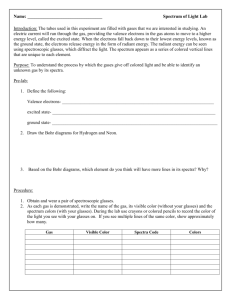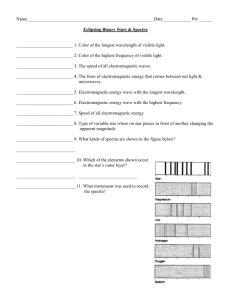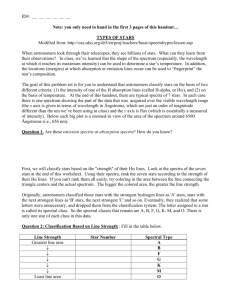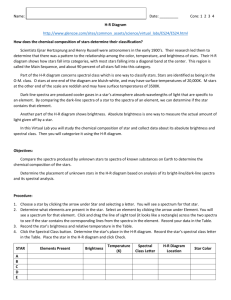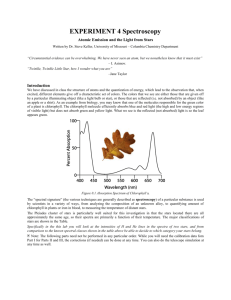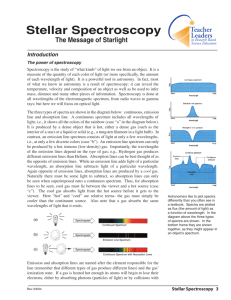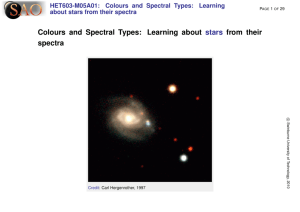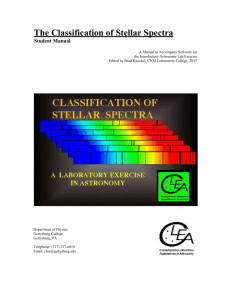Name: Block:______ Fingerprinting the Stars Lab Background
advertisement
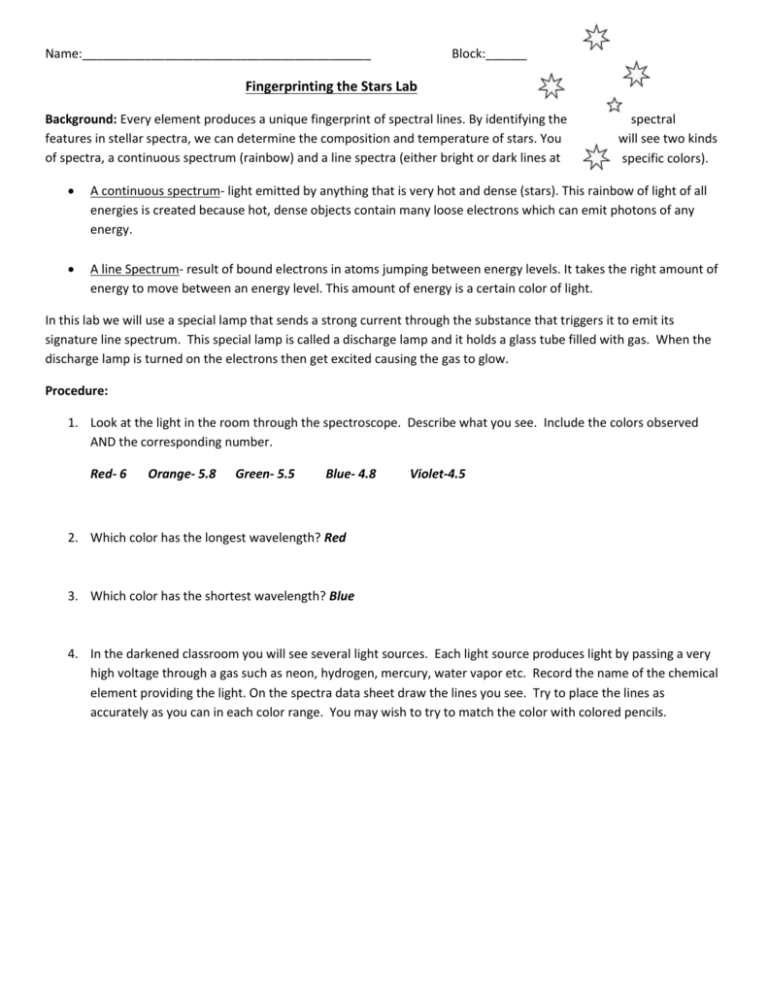
Name:__________________________________________ Block:______ Fingerprinting the Stars Lab Background: Every element produces a unique fingerprint of spectral lines. By identifying the features in stellar spectra, we can determine the composition and temperature of stars. You of spectra, a continuous spectrum (rainbow) and a line spectra (either bright or dark lines at spectral will see two kinds specific colors). A continuous spectrum- light emitted by anything that is very hot and dense (stars). This rainbow of light of all energies is created because hot, dense objects contain many loose electrons which can emit photons of any energy. A line Spectrum- result of bound electrons in atoms jumping between energy levels. It takes the right amount of energy to move between an energy level. This amount of energy is a certain color of light. In this lab we will use a special lamp that sends a strong current through the substance that triggers it to emit its signature line spectrum. This special lamp is called a discharge lamp and it holds a glass tube filled with gas. When the discharge lamp is turned on the electrons then get excited causing the gas to glow. Procedure: 1. Look at the light in the room through the spectroscope. Describe what you see. Include the colors observed AND the corresponding number. Red- 6 Orange- 5.8 Green- 5.5 Blue- 4.8 Violet-4.5 2. Which color has the longest wavelength? Red 3. Which color has the shortest wavelength? Blue 4. In the darkened classroom you will see several light sources. Each light source produces light by passing a very high voltage through a gas such as neon, hydrogen, mercury, water vapor etc. Record the name of the chemical element providing the light. On the spectra data sheet draw the lines you see. Try to place the lines as accurately as you can in each color range. You may wish to try to match the color with colored pencils. Element Name: Helium Color of Glowing Gas: Blue/Purple Element Name: Krypton Color of Glowing Gas: Purple Element Name: Mercury Color of Glowing Gas:_________________ Element Name: Argon Element Name: Nitrogen Color of Glowing Gas:_________________ Color of Glowing Gas: Purple/ Blue The following pages contain information about the spectra of specific elements and the spectra of 5 stars. Worksheet 1 contains the spectra for 7 elements commonly found in star. These spectra do not show colors, however light at the 4000 angstrom end of the spectrum is violet and light at the 6800 angstrom end of the spectrum is red. Worksheet 2 shows the spectra from 5 different stars. Obviously, stars are made of a variety of elements. Use these worksheets to answer the following questions. 5. What elements are in each star? Check the box is that element is present. Star 1 Hydrogen X Iron Star 2 X X Star 3 X X Star 4 X Star 5 X Neon X Sodium Lithium X Magnesium Helium X X X X X X X X X X X X X X X 6. What elements are in every star? Hydrogen and Helium 7. Based on your knowledge of star formation, explain why all stars contain that/those element(s). All stars start from a spinning cloud of hydrogen and eventually ignite and fuse hydrogen into helium in the core. 8. What stars contain all seven elements? Star 2 9. Make a prediction about the size and temperature of the star that contain all of the elements. Massive star, probably blue in color (very hot) since it is able to fuse into iron. Conclusion: For Academic Only 10. How is it possible for scientists to know the composition of stars without traveling to the star? Scientists would use a spectroscope to compare the spectral lines of elements to the lines observed in stars. If the lines match up, then the star contains that element. 11. True or false, every gas has a unique sent of spectral lines that help identify the gas. 12. Predict what would happen to the spectral lines if this discharge lamp were moving away from you similar to how galaxies are moving away from each other. Hint: do not just put the lines will get fainter. If the gases are moving away then they will exhibit redshift. The gas would glow more of a red shade and the spectral lines would appear more toward the red end of the spectrum. Conclusion: For Honors Only 13. Write a one paragraph conclusion about this lab activity. In other words, what can you conclude about the visible spectrum of different stars and gases? Remember, a conclusion is a new idea or concept that you learned from analyzing the data available. Defend your conclusion with data obtained in the lab activity.
